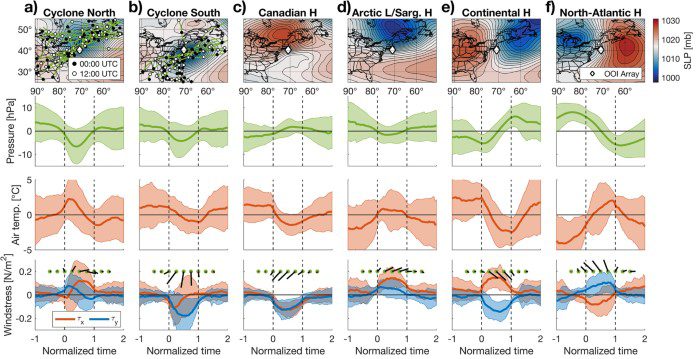Categorization of high‐wind events and their contribution to the seasonal breakdown of stratification on the Southern New England shelf
Lobert, L., Gawarkiewicz, G., & Plueddemann, A., 2023. Categorization of high‐wind events and their contribution to the seasonal breakdown of stratification on the Southern New England shelf. Journal of Geophysical Research – Oceans. e2022JC019625. https://doi.org/10.1029/2022jc019625
High-wind events predominantly cause the rapid breakdown of seasonal stratification on the continental shelf by the end of October. Although previous studies have shown how coastal stratification depends on local wind-forcing characteristics, the locally observed ocean forcing has not yet been linked to regional atmospheric weather patterns that determine the local wind characteristics. Here, we propose a categorization scheme for high-wind events that links atmospheric forcing patterns with changes in stratification. We apply the scheme to the Southern New England shelf utilizing observations from the Ocean Observatories Initiative Coastal Pioneer Array (2015–2022) and results are shown above as composites of each high-wind event category (a-f). Impactful wind forcing patterns occur predominantly during early fall, have strong downwelling-favorable winds, and are primarily of two types: (b) Cyclonic storms that propagate south of the continental shelf causing anticyclonically rotating winds, and (c) persistent large-scale high-pressure systems over East Canada causing steady north-easterly winds. These patterns are associated with opposite temperature and salinity contributions to destratification, implying differences in the dominant processes driving ocean mixing based on a high-wind pattern’s overall strength and wind direction steadiness. The high-wind event categorization scheme allows a transition from solely focusing on local wind forcing to considering realistic atmospheric weather patterns when investigating their impact on stratification in the coastal ocean. (Summary and image provided by Lukas Lobert)

